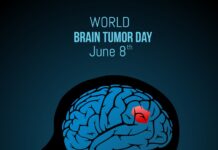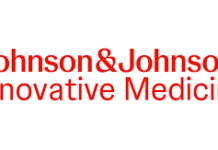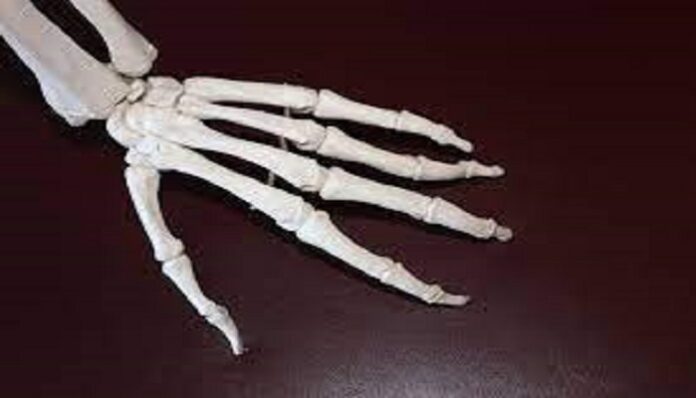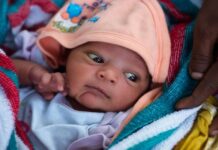Summary
World Health Organization has classified osteoporosis as a noncommunicable disease. Osteoporosis is an asymptomatic or ‘silent’ disease and presents as a fragility fracture. It has a long incubation period with initiation in the womb presents itself in the elderly. It has a socio-economic impact and is not an inevitable part of ageing. The modifiable risk factors need to be propagated amongst consumers, medical professionals, health authorities and administrative authorities to improve bone health. This article provides evidence-based guidance for practitioners to promote women’s health in the segment of bone health. Advice on simple lifestyle changes brings rich dividends.
Introduction
Skeletal health has a vital role in the quality of life throughout the life span of an individual. With ageing, compromised skeletomuscular health leads to osteomalacia, osteoporosis, frailty, falls and fractures. Evidence has shown that deterioration in the skeletal system need not be an inevitable part of ageing; incorporating lifetime measures by taking appropriate nutrition, exercising and being physically active helps in maintaining a healthy skeleton. As elaborated in the epidemiology section, there is a huge gap and an unmet need in the intake of calcium, vitamin D and protein and the use of an excess of salt in India.
Indian Demographics
India is the second-largest emerging economy and the second most populated country globally, with a population of 1.2 billion people. Noncommunicable diseases account for 60% of the total deaths in India (World Health Organization, 2014). The data published by the World Health Organization (WHO) in 2018 shows the life expectancy in India for a female is 70.3 and is expected to increase to 77 years by 2050. Noncommunicable diseases account for 60% of the total deaths in India. Approximately 10% of India’s population, more than 100 million, is aged over 50 years.
Bone Health
Osteoporosis is an asymptomatic or ‘silent’ disease and presents as a fragility fracture. WHO has identified osteoporosis as a crucial noncommunicable disease.[1]
Osteoporotic fractures impose significant financial, medical, and social burdens on society. Typical osteoporotic fractures are those of the hip, spine and wrist. Global data indicate that 20% of women with a hip fracture die within one year of the fracture, and 50% of them never regain their functional independence.[2]
Vertebral fractures can also have significant morbidity and are associated with increased long-term mortality.[3]
Osteomalacia is the deficient formation of osteoid, the organic matrix of bone, to mineralize generally in adults. Common causes of this are vitamin D or phosphate deficiency and systemic acidosis. In this condition, bone mineral density (BMD) is usually low, and it should be considered in the work-up of osteoporosis.
Fragility fracture has been defined by the World Health Organization (WHO) as “a fracture caused by an injury that would be insufficient to fracture normal bone: the result of reduced compressive and torsional strength of bone.” Clinically, a fragility fracture can be defined as one that occurs as a result of minimal trauma, such as a fall from a standing height or less or no identifiable trauma.
Prevalence of Postmenopausal Osteoporosis (PMO)
In the 2009 IOF Asian Audit, expert groups estimated that the number of osteoporosis patients in India was approximately 26 million in 2003, with projections indicating that this would rise to 36 million patients by 2013. In 2013, sources estimated that 50 million people in India were either osteoporotic (T-score lower than –2.5) or had low bone mass (T-score between −1.0 and −2.5)[4]
A recent Indian study showed a crude incidence of hip fracture to be 129 per 1,00000 in people above 50 years of age.
Though the prevalence of PMO in populations above the age of 50 varies widely across theglobe, 5.8– 50.1%, the limited data from India ranges from 25.8 to 62%. Further stratification of the risk based on age shows that the prevalence of low bone mass is more than 40% from the age of 40 and increases to more than 62% by age 60 and 80% by the age of 65. The lifetime risk of osteoporotic fracture is 40%, and 80% of people affected by osteoporosis are women. One out of three postmenopausal women are at risk of fracture. 50–70% of vertebral fractures do not come to clinical attention. Prevention and treatment of osteoporosis reduce morbidity and mortality.
Recent data indicate that Indians have lower bone density than their North American and European counterparts. It is reported that osteoporotic fractures occur 10–20 years earlier in Indians compared to Caucasians.[5] The probable reasons cited are genetics, smaller skeletal size, and nutrition. Early menopause in Indian women, in comparison with their Caucasian counterparts, may assume significance in the causation of postmenopausal osteoporosis in the Indian context since there is an inverse correlation between the number of years since menopause and BMD.[6]
Prevalence of Modifiable Risk factors
The high prevalence of PMO in Indian women may be due to inadequate nutrition, i.e., protein, vitamin D3, calcium, sedentary lifestyle, and early menopause. While genetics contributes up to 80% of BMD variance observed within the population, nutrition, exercise and lifestyle, body weight and composition, and hormonal status all affect bone mass accrual in children and adolescents. Specifically, calcium, vitamin D, and protein are essential for bone health during the first two decades.
Vitamin D insufficiency has been reported throughout the world. Studies on bone mineral health from different parts of India indicate the wide prevalence of vitamin D deficiency in all age groups, including neonates, infants, school children, pregnant/lactating women, adults, and postmenopausal women. The community based Indian studies on apparently healthy controls revealed a prevalence ranging from 50% to 94%. Hospital based studies showed a prevalence of Vitamin D deficiency ranging from 37% to 99%. Recent data on vitamin D status in pregnant and lactating Indian women from Delhi, Lucknow and Mumbai reveal a very high prevalence of hypovitaminosis D (84–93%). One study suggested that supplementation with vitamin D during pregnancy could result in better anthropometric indices in newborns up to 9 months of follow up.
Dhaliwal et al. have reported that hip fracture patients in India have vitamin D deficiency and secondary hyperparathyroidism.[7]
Inadequate exposure to sunlight due to increased indoor lifestyle. Pollution can hamper the synthesis of Vitamin D in the skin by ultraviolet rays. The increased skin pigmentation and application of sunscreens and cultural practices such as the burqa and purdah system prevent the formation of vitamin D. Unspaced and unplanned pregnancies in women with dietary deficits can worsen Vitamin D status in both mother and child. Dietary sources of vitamin D are limited to fatty fish, egg yolk, nuts and some types of fungi, which do not feature significantly in the diet. Phytates and phosphates, present in a fibre-rich diet, can deplete Vitamin D stores and increase calcium requirement.
Inadequate calcium intake is a global problem that has been reported among women of child-bearing age, pregnant women, children and adolescents. There is a wide prevalence of low dietary calcium intake in Indians of all age groups, with most postmenopausal women consuming <400 mg/ day and is seen in all the other age groups (infancy, adulthood, postmenopausal women, pregnancy and lactation).
Dietary protein significantly influences bone throughout the life cycle that likely begins at some point during the prenatal period. High dietary protein intake may primarily influence trabecular bone loss as compared with a standard protein diet.[8]
Additionally, findings from mother-offspring cohort studies demonstrate the impact of maternal diet during pregnancy on bone health outcomes in children.[9]
Meanwhile, alcohol intakes of 2 units or less per day were not associated with increased fracture risk. However, consumption of alcohol above this threshold was associated with an increased risk of any fracture.
Peak Bone Mass
Peak bone mass (PBM) is the highest level of bone mass achieved as a result of average growth and is essential, as it determines resistance or susceptibility to osteoporosis and fractures. 40-50 per cent of bone mass is accumulated during the pubertal years, while 80% is achieved by 18 years of age. PBM results from the interaction of various factors: genetic, hormonal, racial, nutritional, lifestyle, and physical exercise. Environmental factors modulate the expression of the genetic potential to achieve PBM.
Since 50–60% of peak bone mass is reached during childhood and adolescence, intervention during this period is essential to achieve optimum bone mass and reduce the impact of bone loss with age.
Bone Health Through the Lifespan
Preconception
Following Barker’s theory, the seeds of chronic diseases are sown in the womb, and bone health is one of them. Hence, osteoporosis is an in-utero disease with geriatric consequences. A woman planning for pregnancy needs to be is advised to correct and maintain her macronutrient and micronutrient status.
Pregnancy and Postpartum
Pregnancy appears to help protect most women’s calcium reserves in several ways. Increased intestinal calcium absorption appears to be an important compensatory mechanism for securing additional calcium during pregnancy. The fractional absorption of calcium increases by 60–70% during pregnancy—from approximately 33–36% in the nonpregnant state, 6% in the second trimester, and 54–62% in the third trimester. For women with calcium intakes of 1 g/day, this would correspond to increased absorption of 185 mg/day in the second trimester and 235 mg/day in the third trimester, which amounts close to fetal needs. The increased absorption of calcium occurs in parallel with an increase in serum 1,25-dihydroxy vitamin D concentrations. Despite the increased need for calcium, renal calcium excretion increases by 46% (approximately 76 mg/day) throughout pregnancy, with calcium intakes of approximately 1,200 mg/day. This increase is due to increased glomerular filtration rate during pregnancy and increased absorptive load. In women with low dietary intakes (<400 mg/day), calcium excretion in the third trimester is reduced. Bone lost during pregnancy appears to be regained over 12–24-month period postpartum.
Breastfeeding also affects a mother’s bones. Studies have shown that women often lose 3–5% of their bone mass during breastfeeding, although they recover rapidly after weaning. This bone loss may be caused by fetal calcium requirement, which is fulfilled from the maternal skeleton and is usually recovered within six months after breastfeeding ends.
Optimization of maternal nutrition and intrauterine growth should ideally be included in the preventive strategies for osteoporotic fracture. Evidence supports the role of poor maternal nutrition (calcium and vitamin D) on neonatal bone mineral content and its consequences on adult bone mass, skeletal size, and fracture risk. It is imperative to initiate the management of postmenopausal osteoporosis from in utero in the early stages of pregnancy. In a prospective, randomized trial of 68 women aged 20-35 years, given 1000 IU daily of vitamin D were compared to 62 age-matched pregnant women given placebo. The intervention started at two weeks following the absence of menstruation and continued up until the final gestational sonogram at 34 weeks. Supplementation was associated with significantly greater length of the metal femur as measured by sonography in the 2nd and third trimesters than placebo. It increased growth to the proximal metaphyseal, midshaft, and distal metaphyseal sections of the femur and humerus. While increases were observed in humerus length, these were not statistically significant.[10]
Childhood and Adolescence
Although PBM is achieved by 25–30 years, 40–50% of bone mass is accumulated during pubertal years, and 80% is achieved by 18 years. At skeletal maturity, women have 10–15% lower bone mass than men. Asian Indians have a significantly lower peak bone mass than Caucasians. Calcium, vitamin D and protein are essential nutrients for bone health during the first two decades. In children and adolescents in whom calcium intake is deficient, intake of calcium from the diet needs to be encouraged. Supplementation according to adequate intake for age is recommended if there is a dietary problem with calcium consumption. In children and adolescents with low vitamin D status, vitamin D supplementation according to adequate intake for age is recommended. While genetics contribute up to 80% of BMD variance observed within the population, nutrition, exercise and lifestyle, body weight and composition, and hormonal status all affect bone mass accrual in children and adolescents.
Adults
During this phase of life, the primary bone health objective is avoidance of premature bone loss and maintenance of a healthy skeleton. Throughout life, bone is in a constant state of turnover, described as the bone remodelling cycle. During this 30–40-year period, bone mass remains comparatively high in both sexes until the onset of menopause in women and the beginning of the eighth decade in men. As for younger individuals, a well-balanced diet rich in calcium, vitamin D and protein, with adequate amounts of certain other micronutrients, will fulfil the nutritional requirements of the adult skeleton.
Menopause and Geripause
The period of accelerated bone loss usually follows menopause, averaging 1 to 2 per cent per year (range 1-5 per cent yearly) per year for the next 5–10 years, followed by a slower rate of bone loss resulting in lifetime losses of about 35% of cortical bone and 50% of trabecular bone. To maintain physical function, older people need more dietary protein than younger people; on an average older people should consume proteins within the range of 1–1.2 g/kg body weight/day.
Additionally, most older adults who have an acute or chronic disease need even more dietary protein (i.e., 1.2–1.5 g/kg body weight/day); people with severe illness or injury or with marked malnutrition may need as much as 2 g/kg body weight.
Evidence on the Effect of Lifestyle Management on Bone Health
The Indian Council of Medical Research (ICMR) conducted studies on three socioeconomic groups at the National Institute of Nutrition, which showed that after the age of 50 years, osteoporosis of the spine is only 16% in the high-income group (with a calcium intake of 1,000 mg) compared to the low-income group reporting 65% (calcium intake around 400 mg).[11] Their results indicated that with decreasing income of the groups, there was a graded decrease in anthropometry and body mass index and bone mineral content and calcium intake (mean intakes were 933, 606, and 320 mg/day). Parallel to a decrease in calcium intake, bone densities were also lower with a decreasing income. Those above 50 years suffered from much worse bone densities than those less than 50 years in the same group. The fracture rate at the neck of the femur was shown to occur 12–15 years earlier in women from the low-income group compared to that in the high-income group. There is evidence of widespread calcium depletion as indicated by bone density measurements, particularly in women after repeated episodes of pregnancy and lactation.
A published review on calcium nutrition and osteoporosis in Indian females cites a study carried out in two groups of women aged 20–90 years, with median intakes of calcium of 800 (with lifetime milk consumption) or 480 mg/day (who consumed lower quantities of milk), in whom BMD was measured. The group with a higher calcium intake entered osteoporotic and fracture zones of bone density ten years later than those with lower intake. In addition, women engaged in hard work and those with lifetime vegetarian habits are at a reduced risk of osteoporosis. The Z-scores of bone density are much lesser than those of Hologic standards, despite the calcium intakes recording at about 1 g. Factors other than calcium intake seem to determine the peak bone content and density.
The limited data on the impact of lifestyle on BMD and osteoporosis evaluated in Indian jawans and Indian sportswomen highlighted that excellent nutrition, better bone biochemical parameters, adequate sun exposure, and physical activity from younger age help to attain better peak bone mass when compared to their age-matched sedentary controls.[12,13]
This brings to attention the urgent need to have community-based educational programs on nutrition, physical and outdoor activities, and government-initiated school and health programs to tackle these modifiable factors.
Besides scientific studies, the doctors, paramedical staff and the public are the need of the hour. We all need to work together and execute available modalities of prevention and treatment in order to relieve women from miseries and suffering of osteoporosis consequences. The focus, in turn, is to provide quality of life to the woman who is the main contributor to the family and society at large.
Who is responsible for implementing strategies to improve bone health?
It has to be a collective effort from the consumer and all medical personnel dealing with women’s health. Wide awareness programs have to be initiated to address different myths about osteoporosis. Education of the doctors, paramedical staff, and the public is also of significance. Osteoporosis as a subject should be included and stressed more in undergraduates and postgraduates teaching program. The health authorities, government and non-government agencies need to be proactive.[14]
Conclusion
We can take measures to reduce the burden of the disease. Public messages on the accrual of Peak Bone Mass through a well-balanced diet and regular exercise throughout our life span should be promoted. Food fortification with Vitamin D is the best option to address the issue of vitamin D deficiency. Government should support research groups to study and monitor the impact of supplementation programs and fortification strategies. Promotion of dietary calcium is needed, and supplements should be used as a second line to bring total calcium intake to the recommended level.
Acknowledgment
The article is based on the clinical practice guidelines on postmenopausal osteoporosis by the Indian Menopause Society. They can be accessed at www.jmidlifehealth.org
References
1. Kanis JA. Assessment of osteoporosis at the primary health care level 2008 World Health Organisation Scientific Group. WHO Collaboration Centre for Metabolic Bone Diseases University of Sheffield.
2. Cooper C, Campion G, Melton LJ 3rd. Hip fractures in the elderly: a worldwide projection. Osteoporos Int. 1992; 2(6):285-9.
3. Kado DM, Browner WS, Palermo L, Nevitt MC, Genant HK, Cummings SR. Vertebral fractures and mortality in older women: a prospective study. Study of Osteoporotic Fractures Research Group. Arch Intern Med. 1999;159(11):1215-20.
4. International Osteoporosis Foundation. The Asian Audit: Epidemiology, costs and burden of osteoporosis in Asia 2013-Asia_Pacific_Audit-Sri_Lanka
5. Shatrugna V, Kulkarni B, Kumar PA, et al. Bone status of Indian Women from a low income group and it’s relationship to the nutritional status. Osteoporos Int. 2005;16:1827.
6. Meeta et al. Early age of natural menopause in India, a biological marker for early preventive health programs. Climacteric. 2012;15:1
7. Dhanwal DK, Sahoo S, Gautam VK, Saha R. Hip fracture patients in India have vitamin D deficiency and secondary hypothyroidism. Osteoporos Int. 2013;24:553-7.
8. Sukumar D, Ambia-Sobhan H, Zurfluh R, et al. Areal and volumetric bone mineral density and geometry at two levels of protein intake during caloric restriction: a randomized, controlled trial. J Bone Miner Res. 2011;26(6):1339Y1348.
9. Mitchell PJ, Cooper C, Dawson-Hughes B, Gordon CM, Rizzoli R. Life-course approach to nutrition. Osteoporos Int. 2015;26: 2723Y2742
10. Vafaei H, Asadi N, Kasraeian M, et al. Positive effect of low dose vitamin D supplementation on growth of fetal bones: A randomized prospective study. Bone 2019 Feb 21;122:136-142.
11. ICMR Taskforce Study. Population-based reference standards of peak bone mineral density of Indian males and females. An ICMR multicentre task force study. Indian Council of Medical Research, New Delhi; 2010.
12. Marwaha RK, et al. Peak bone density of physically active healthy Indian men with adequate nutrition and no known current constraints to mineralization. J Clin Densitom. 12;314-21.
13. Marwaha RK, Puri S, Tandon N, Dhir S, Agarwal N, Bhadra K, et al. Effect of sports training and nutrition on bone mineral density in young Indian healthy females. Indian J Med Res.
14. Meeta, Harinarayan CV, Marwah R, Sahay R, Kalra S, Babhulkar S. Clinical practice guidelines on postmenopausal osteoporosis: Indian menopause society, 2020.
+



























